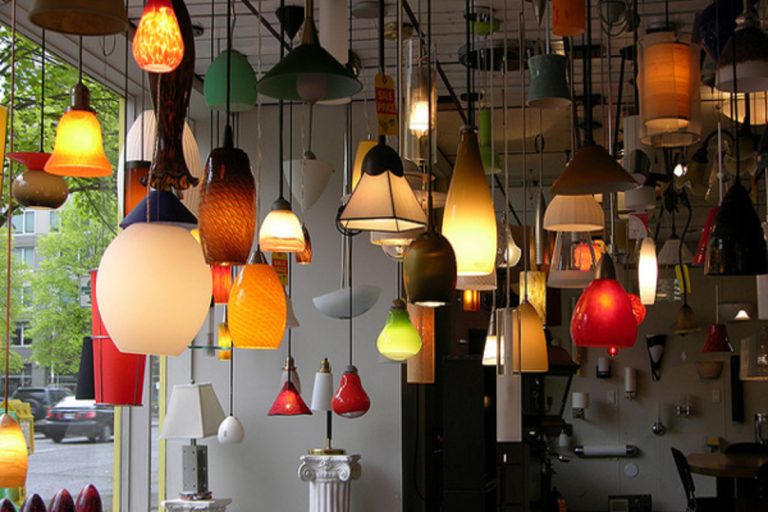Just about every household in the world uses electricity, so light is a pretty important feature within a home. Without light, it’s very difficult to see clearly and light is also necessary for our sleep-wake cycle. The sun is the biggest source of light and can be utilized in the home (as natural light). Fire is another source of light, but the most common source of light in homes is from electrical sources.
Here are five types of lighting (from electricity and natural sunlight) that you can use in your home, how they work, and the best places to use them.
#1: Accent Lighting
The purpose of accent lights is to focus on a specific point for a dramatic effect. These types of lights can make a room appear bigger by highlighting a certain focal point or points. Examples of focal points include an architectural feature of a home (such as a fireplace) and artwork (paintings, sculptures, etc.). Accent lights are also typically three times brighter than traditional lights to help with this effect.
They work great in any room where there’s a focal point, but they’re usually used in family/living rooms or kitchens. Here are some examples of different types of accent lighting fixtures:
- Wall-mounted lights
- Track lights
- Tape and extrusions
- Line bars
- Downlights
- Directional recessed fixtures
#2: Ambient Lighting
Ambient lighting is designed to light up a room in its entirety and is the main light of any room. It’s also used outdoors because of its ability to provide lighting across a large area. At night, they increase visibility and security around buildings and reduce the occurrence of injuries.
Examples of indoor ambient lighting fixtures include table and floor lamps, LED smart lights, chandeliers, and other ceiling fixtures. On the other hand, outdoor ambient lighting fixtures include spotlights, post lanterns, hanging fixtures, and garage and canopy lights. Even though accent lights are brighter, ambient lights are designed to cover a larger space, so this type of lighting will be your main source of light in your home.
#3: Decorative Lighting
Decorative lights are similar to accent lights in the sense that they give a dramatic effect combined with Costco HVAC, but their primary use is for decorative purposes and not necessarily for illuminating a specific object or place. Chandeliers can count as decorative lighting, but they also provide enough light to illuminate an entire room, making them ambient lighting. Examples of decorative lights include:
- Wall sconces
- Table and floor lamps
- Pendant lighting
- Ceiling fan lights
Again, some of these can be considered ambient or accent light fixtures, but it all depends on how they’re being used and how much light they give off.
#4: Natural Lighting
Natural light is the light from the sun that comes through your windows. Many people use a combination of natural light and other light sources— but not necessarily at the same time. Natural light can light up an entire room as ambient light does, but the downside to natural light is that it can also make a room hot. While using natural light helps you save on electricity, your entire energy bill may still be higher because your air conditioning system may have to work harder.
A tip is to use curtains on double traverse rods to help control the amount of heat (and the amount of light) that comes into the room. These types of rods help you layer your curtains, and you can use a sheer curtain closest to the window and a heavier curtain on the outside. Open the heavier outside curtains and leave the sheer curtains closed to allow light to come in. Some people choose to use natural light during the day and their light fixtures in the evening and at night.
#5: Task Lighting
Task lighting fixtures are also similar to accent lights, as they are used to focus on a specific point. However, instead of architectural structures and artwork, they shine light to help you focus on a specific task— as the name suggests. The most common example of a task light is a desk lamp, but other examples include:
- Pendant lights
- Under-cabinet lights
- Downlights
As you can see, there are many different types of lighting options to choose from for your home, and many fixtures can be classified under more than one type of lighting. It all depends on how they’re being used. You can always use a mixture of different lighting types in your home, as well as natural lighting.

